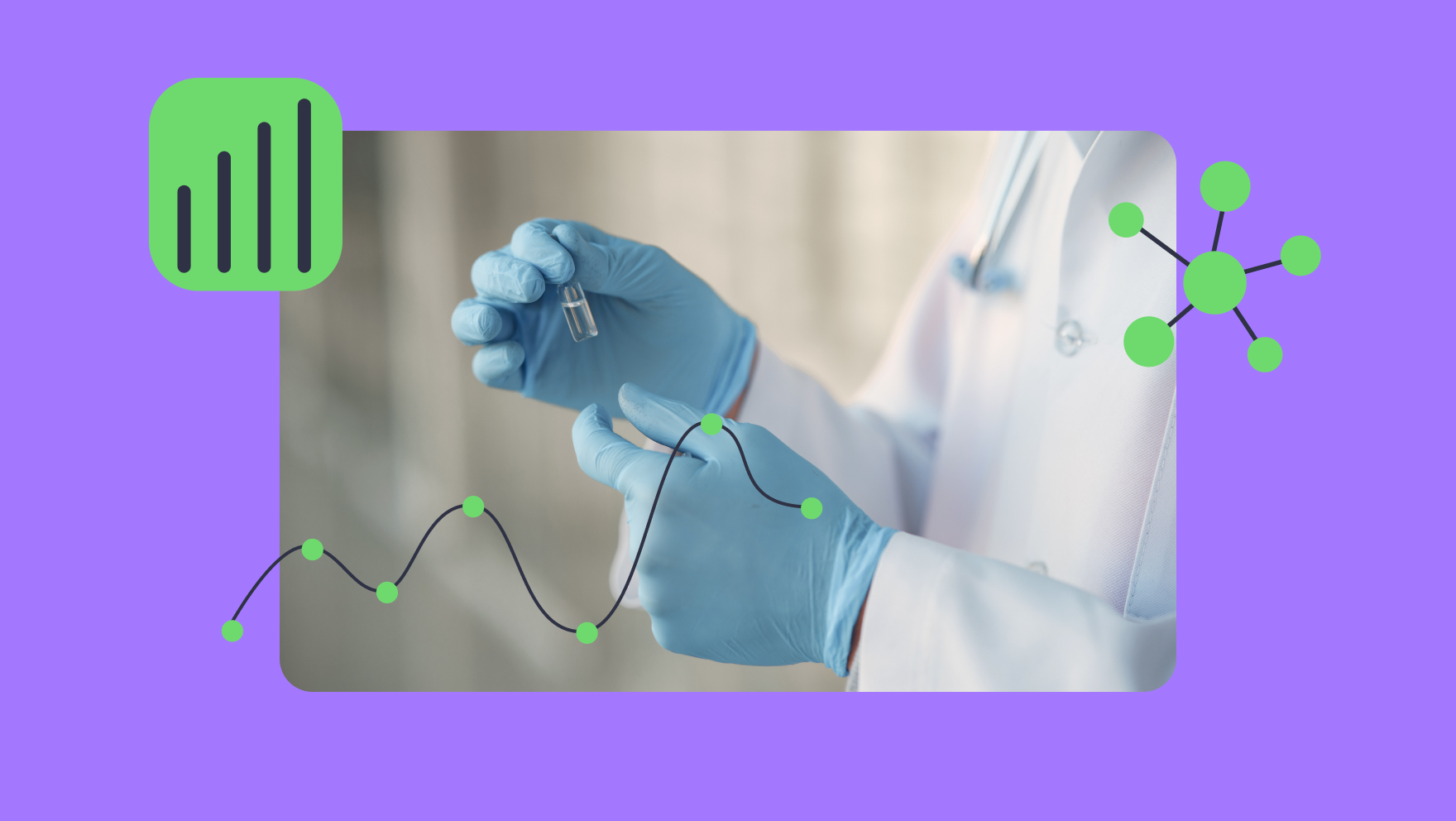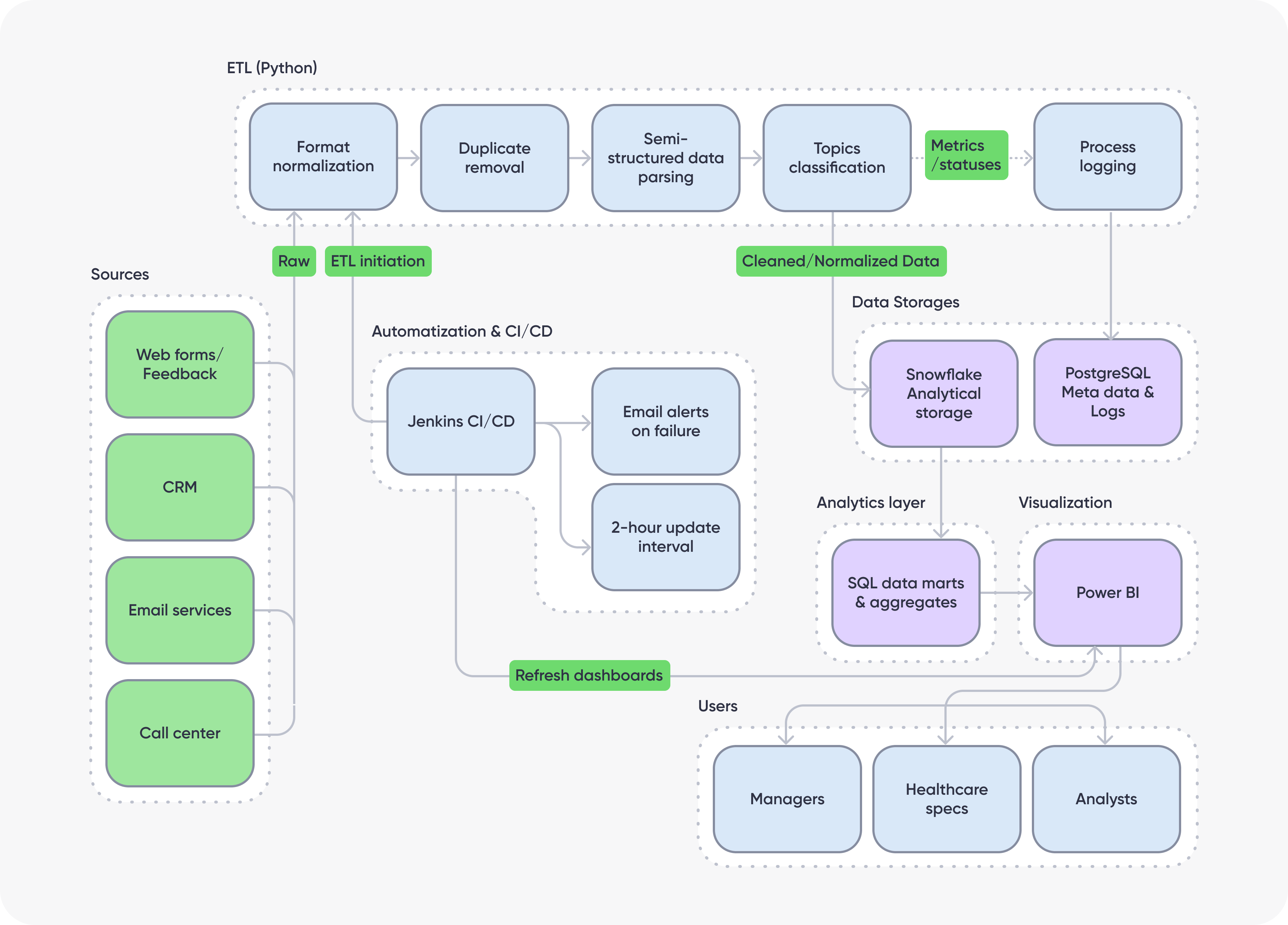Omnichannel VoC analytics for a pharmaceutical company
In the pharmaceutical industry, delays in addressing customer feedback can pose serious risks to both patient health and corporate reputation. Our client set out to build a solution for managing and analyzing user requests.

In the pharmaceutical industry, delays in addressing customer feedback, especially related to medication side effects or supply issues, — can pose serious risks to both patient health and corporate reputation. That’s why our client set out to build a solution for managing and analyzing user requests.
Challenge: huge delays in identifying crucial trends due to manual work, and problems with data consistency
A large pharmaceutical company operating on the international market receives thousands of user requests daily through multiple channels — including the call center, CRM, email, online forms, and customer feedback services.
Before implementing the analytics platform, processing this information was performed manually, leading to daily delays in the discovery of key messages.
- Data duplication and inconsistency: the same requests could be registered in different systems without the ability to match or consolidate them.
- Different data formats: variations in date formats, encodings, and message languages made the data difficult to process.
- Limited quality control: there was no clear visibility into operator KPIs or request trends.
The solution: system integration and platform implementation for data gathering, classification, and visualization
Our initial AI Readiness Workshop crystallized the main goal: to create an integrated, structured, and automated system for processing and analyzing user requests. The workshop helped move from a general need for better analytics to a concrete plan focused on:
- Consolidating data into a single system,
- Enabling automatic processing, normalization, and classification of the data,
- And building a tool for fast analytics and trend visualization.
To address these requirements, we implemented a streamlined data pipeline to capture and visualize the omnichannel client feedback, creating an analytical VoC (Voice of the Customer) platform. It integrates a set of technological components that provide end-to-end functionality — from data collection and processing to storage, analysis, and visualization of user requests.
Solution tech details
Data storage
We used Snowflake as the primary analytics data warehouse for aggregating and long-term storage of large data volumes. For storing service tables, metadata, and results of preliminary data processing, PostgreSQL was implemented.
ETL & data processing
Data extraction, cleaning, normalization, classification, and loading into the warehouse. Preprocessing included normalizing data formats (dates, encodings, message languages), removing duplicates, and parsing semi-structured data (such as JSON and attachments received from the CRM).
Machine Learning
To perform the classification of messages by topics, we utilized Python scripts with a set of specific libraries (scikit-learn).
Analytics
Analytical data marts were built using SQL queries (both Snowflake SQL and PostgreSQL SQL). Query performance was improved by applying clustering and partitioning mechanisms in Snowflake, which significantly accelerated execution times for analytical operations.
Visualization
For data visualization and dashboard creation, the team selected Power BI. The dashboards allow users to filter information by key parameters: topic of the request, channel of submission, region, and time period. The system includes role-based dashboards, tailored for different user groups — operators, managers, and analysts.
Updates automation & CI/CD
The automation of ETL processes, data mart updates, and dashboard publishing was handled through Jenkins. This setup enabled automatic data updates every two hours, ensuring timely analytics. On-demand execution is also supported for peak load periods.

The overall data workflow within the platform is as follows:
- Data Ingestion – Requests are received from the CRM, email systems, call center, and other channels.
- ETL Processing – Python scripts clean, normalize, and load the data into Snowflake.
- Analytics Mart Creation – SQL queries build aggregated tables for analysis.
- Visualization & Analysis – Processed information is displayed in interactive Power BI dashboards, accessible based on user roles.
- Data Refresh – Automated updates occur every two hours, with manual refresh options available when needed.
Value and results
The implementation of the VoC analytics platform enabled our client to build a centralized, transparent, and scalable system for processing and analyzing user requests.
- Unified data storage — all requests were consolidated into a single source, eliminating duplication and enabling consistent analysis.
- Automated processing — data preparation shifted from manual work to an automated cycle with updates every two hours (and on-demand when necessary).
- Deeper customer understanding — the company gained insights into key issues and priority topics, allowing faster responses to critical requests.
- Process transparency — real-time monitoring of call center operations, email and chat channels became possible.
- Improved service quality control — dashboards provided visibility into KPIs and operator performance trends.
- Faster analysis — what previously took days of manual effort was reduced to automated updates and near real-time insights.
The solution strengthened the company's ability to manage risks and maintain trust in a highly regulated and sensitive industry. Previously we discussed how we built an AI Travel Agent that handles bookings instantly.












